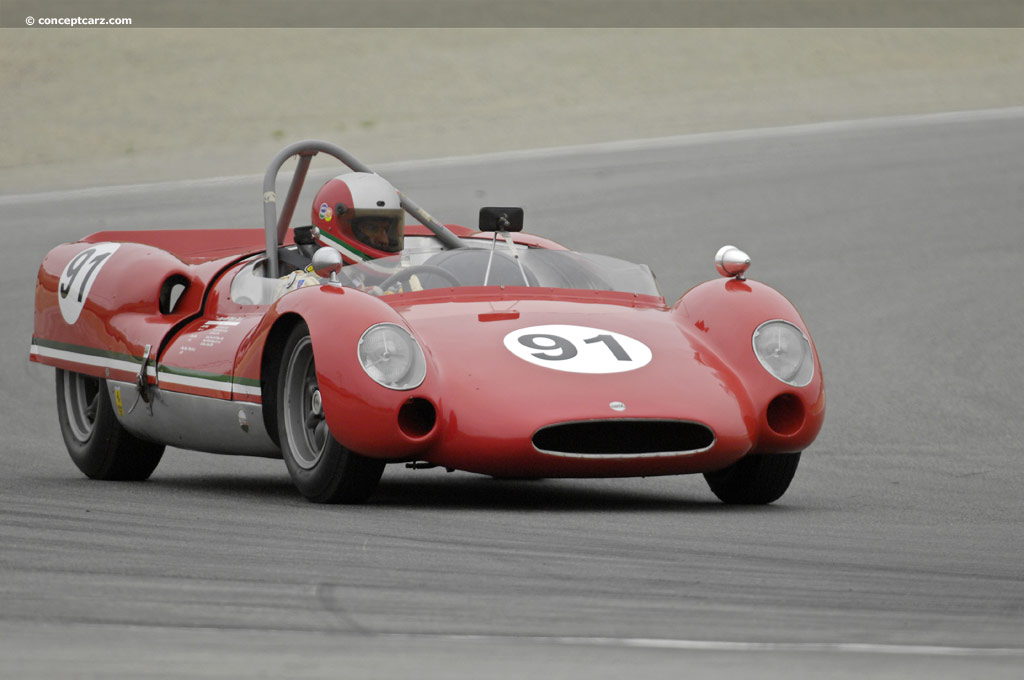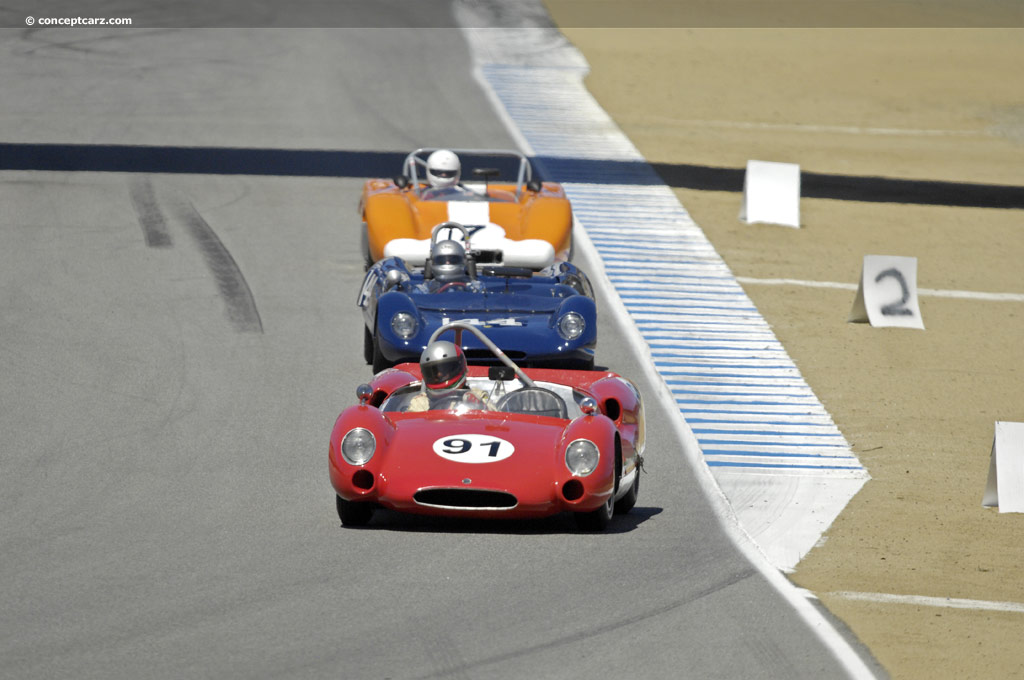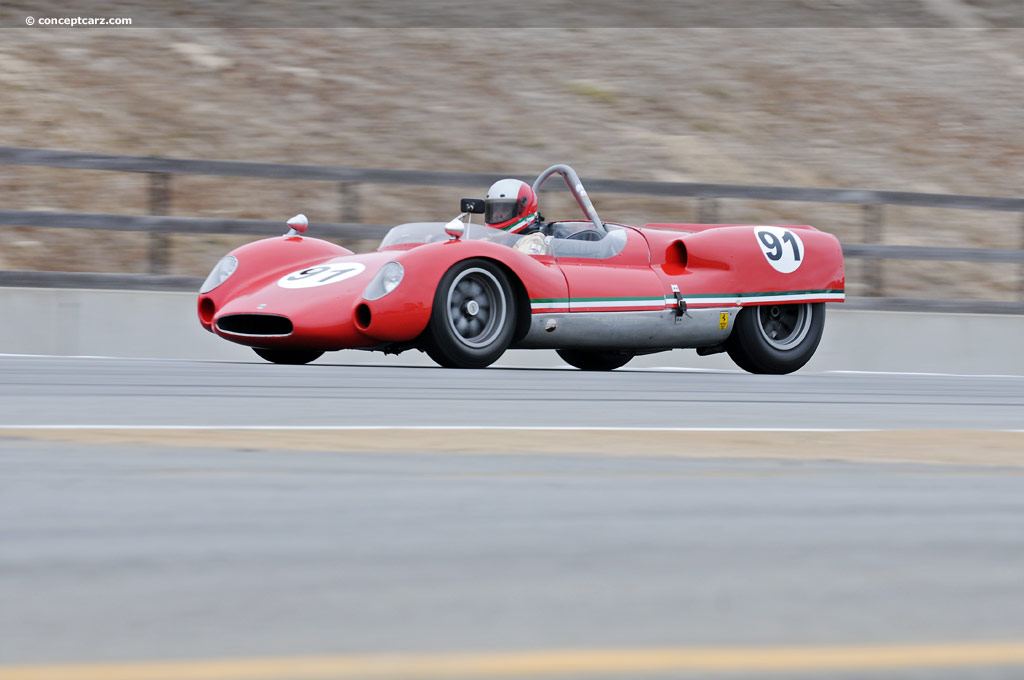Following World War II, Charles Cooper and his son John began building racing cars in a small garage in Surbiton, Surrey, England, in 1946. By December of 1947, the Cooper Car Company had been formed and together with JOhn's boyhood friend, Eric Brandon, the team was soon racing at the pinnacle of motorsport, with their rear-engined, single-seaters racing in both Formula One and the Indianapolis 500, and their Mini Cooper in rally competition. 
Sports Racer
Chassis #: CM 5/62
Engine #: 5509
View info and historyCooper gained a competitive edge by moving the engine from the front and placing it in the rear, proving its potential when Jack Brabham placed sixth at the 1957 Monaco Grand Prix in a rear-engined Formula 1 Cooper. The following year, Stirling Moss won the Argentine Grand Prix in Rob Walker's privately entered Cooper, earning credence for the engine configuration. When Maurice Trintignant won the next race at Monaco, the racing world took notice and the rear-engine revolution began in earnest. Brabham and the Cooper Works team won the 1959 Formula One World Championship, the first to claim the title in a rear-engined car, and repeated this feat in 1960. Having raced, and beaten, the best that Europe had to offer, Cooper turned its attention across the Atlantic, setting its sights on the Indianapolis 500. In 1960, Brabham took one of the championship-winning Cooper T53 'Lowlines' to Indy for test runs, then entered the Type T54 in the 500-mile race. The T54 was a unique vehicle based on the 1960 F1 design and compared to many other vehicles at the race, was severely underpowered with its 2.7-liter Coventry Climax engine dwarfed by the 4.4-liter Offy engines. Cooper's advantage, however, was its small size, lightweight construction, and superior fuel economy. Brabham qualified the car in 13th position within the 33-car field and ran as high as third place during the race, finishing in ninth overall (still on the lead lap). It would take four more years before front-engined Indy roadsters became obsolete, with the unique rear-engined (mid-engine) T53 being the instigator of this revolution. The Cooper Monaco
After winning the Formula Two Manufacturer's World Championship in 1959, John and Charles Cooper returned to sports car construction, bestowing the name 'Monaco' in honor of Maurice Trignitant's victory for Cooper there. It was given the gearbox and suspension of the 1958 Grand Prix cars, clothed in sleek bodywork, and typically powered by 1.5-liter or 2.0-liter Coventry Climax SOHC aluminum engines. Driven by many of the top drivers of the era, including Roy Salvadori, Jim Russell, Jack Brabham and Stirling Moss, the Cooper Monaco quickly chalked up an enviable victory tally.
Sports Racer
Chassis #: CM 5/62
Engine #: 5509
View info and historyWith the mid-engine layout, the Monaco did not have a central transmission tunnel, helping to reduce weight even further and maximizing power sent to the rear wheels. The engines were installed at an 18-degree angle and attached via four points on rubber bushings. On the left side of the chassis rails, the twelve-gallon aluminum fuel tank was mounted outboard, while the driver and outboard battery were located on the right-hand side, distributing the weight evenly. The rack-and-pinion steering was centrally located, and 10.25-inch Girling disc brakes provided the stopping power. 44 percent of the weight was in the front with the remaining 56 percent in the rear.The body designs were produced in-house by chief designer Owen 'The Beard' Maddock and built there by the father and son team of Fred and Pete Bedding. The Cooper Monaco Type 57 MKI had a wheelbase of 91 inches and a length of 141 inches. The first eight examples that were registered in 1959 sold as tax-free kit cars, with varying specifications as they were built for various racing purposes. Half of these went to the United States. 
Sports Racer
Chassis #: CM 5/62
Engine #: 5509
View info and historyThe MKII followed in 1960 and only two examples were built. They were very similar to the MKI but with a longer nose. The MKIII followed in 1961, with modifications that included straight frame tubes, updates to the suspension system with coil springs and wishbones at the rear, and a wide radiator intake. The body became more streamlined and gained tail fins. One example went to British privateer Peter Berry, another to Roger Penske, and the third and final example to Texan Hap Sharp (later of Chaparral fame), who had also received an MKI. For the 1961 season, FIA regulations shifted focus to GT cars, so Cooper sent its Monaco to the United States to compete in the forerunner of FIA Group 7 Can-Am racing. Working directly with Carroll Shelby, the Type 61 chassis were modified in England and received its 289 cubic-inch Ford V8 paired with either a Huffaker or Colotti 4-speed transaxle state-side. Shelby received four of these 'King Cobras', and W. Mitchell and Jack Ensley each received a copy. The King Cobra was 8.5-inches wider, two inches lower, and four inches longer than the standard Type 61 Monaco chassis. Its space frame design used 1.5-inch tubing and its suspension was similar to the setup used for Cooper's Formula One program with the fronts incorporating Triumph uprights. The success of the King Cobras was often limited due to reliability issues. Among the list of top drivers who piloted the King Cobras include Bob Holbert, Ronnie Bucknum, Bob Bondurant, Ed Leslie, Dave McDonald, Parnelli Jones, and Ritchie Ginther.
by Daniel Vaughan | Jan 2022

Sports Racer
Chassis #: CM 5/62
Engine #: 5509
View info and history
After winning the Formula Two Manufacturer's World Championship in 1959, John and Charles Cooper returned to sports car construction, bestowing the name 'Monaco' in honor of Maurice Trignitant's victory for Cooper there. It was given the gearbox and suspension of the 1958 Grand Prix cars, clothed in sleek bodywork, and typically powered by 1.5-liter or 2.0-liter Coventry Climax SOHC aluminum engines. Driven by many of the top drivers of the era, including Roy Salvadori, Jim Russell, Jack Brabham and Stirling Moss, the Cooper Monaco quickly chalked up an enviable victory tally.

Sports Racer
Chassis #: CM 5/62
Engine #: 5509
View info and history

Sports Racer
Chassis #: CM 5/62
Engine #: 5509
View info and history
by Daniel Vaughan | Jan 2022
Related Reading : Cooper Monaco History
Sports car racing had been slowly growing in popularity since the conclusion of the Second World War, peaking near the close of the 1950s. The competition had grown, and designs had become perfected. Cooper began work on their racer in 1958, with the intention of competing during the 1959 season. The resulting vehicle was named the Monaco, in honor of Trintignants accomplishments at that race in....
Continue Reading >>
Continue Reading >>
Sports Racer VehiclesSimilarly Sized Vehicles
Similarly Sized Vehicles
from 1962
1962 Cooper Monaco Vehicle Profiles
Recent Vehicle Additions
Related Automotive News
Scuderia Ugolini: 1959 Formula One Season
While the name Ferrari is recognized the world-over, Ugolini, on the other hand, is only a name recognized by those very knowledgeable of motor racing and football. However, the name is nearly as vitally important to the world of motor sport. In 1959,...
John Fisher: 1959 Formula One Season
Throughout the history of Formula One there have been many names that have come and gone, many of which barely make a mark on the sport other than in the history books. However, in 1959, Bruce Halford would help John Fisher to make an impressive mark,...
R.H.H. Parnell: 1959 Formula One Season
In 1951, Reg Parnell pulled off a huge upset surviving an absolute deluge of rain that flooded the Silverstone circuit during the BRDC International Trophy race. Parnell would manage to keep his Ferrari 375 under control long enough to be declared the...

High Efficiency Motors: 1958 Formula One Season
C.T. Tommy Atkins would start out his career as a motorcycle racer riding Douglas motorcycles in the early 1930s. By the time the mid-to-late 50s rolled around, Atkins had moved on from racing, but not very far. Perhaps feeling a need to support up-and-coming...

1962 Monaco Grand Prix: McLaren Carries the Cooper Flag back to the Top
By the beginning of the 1962 Formula One season Jack Brabham had left Cooper to form his own racing team. It seemed the glories days of the double World Championship were well and truly behind them. However, left in Brabhams stead would be a man very...


































